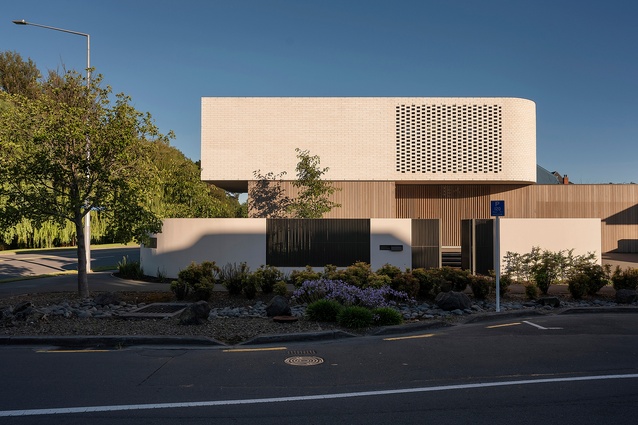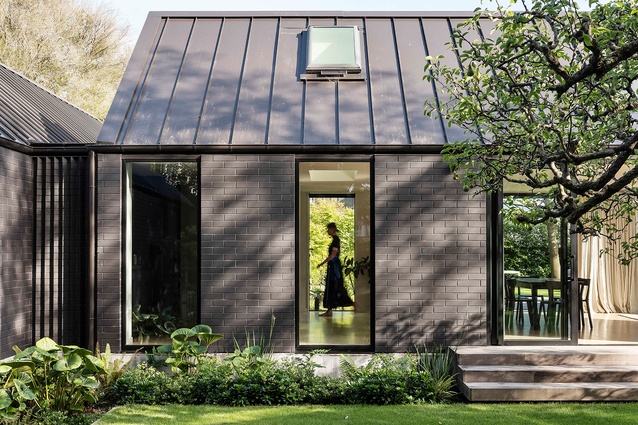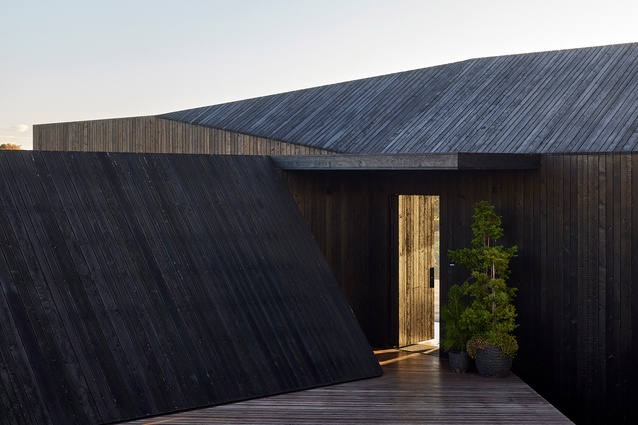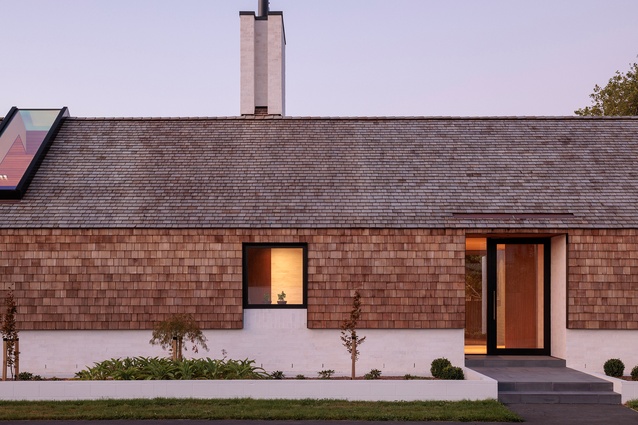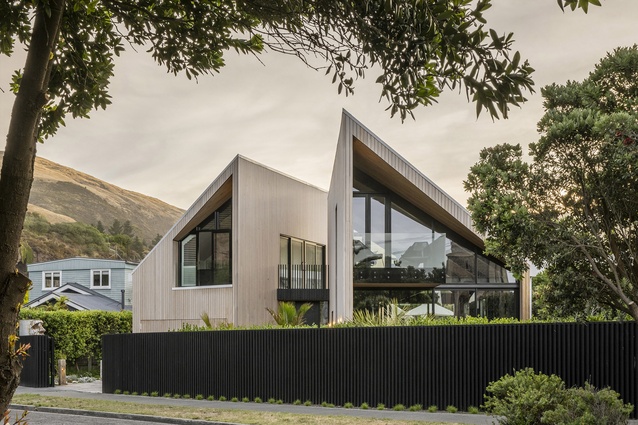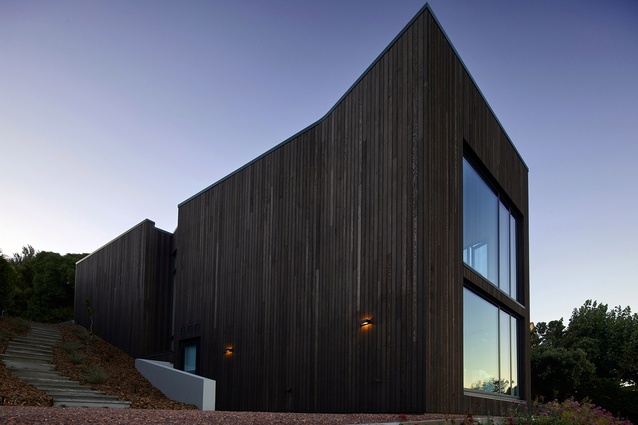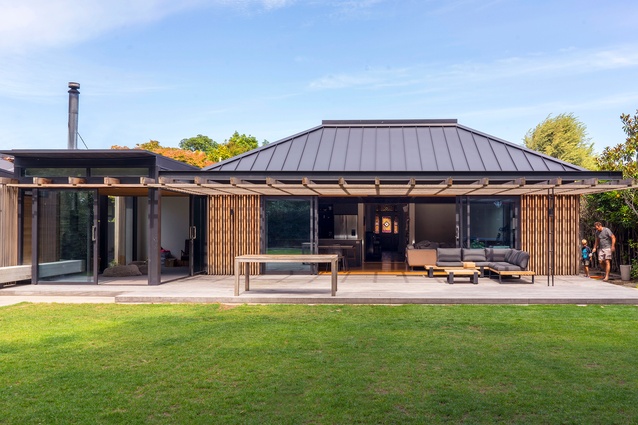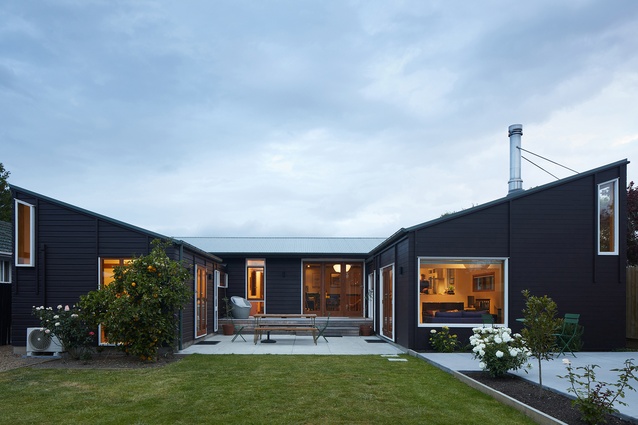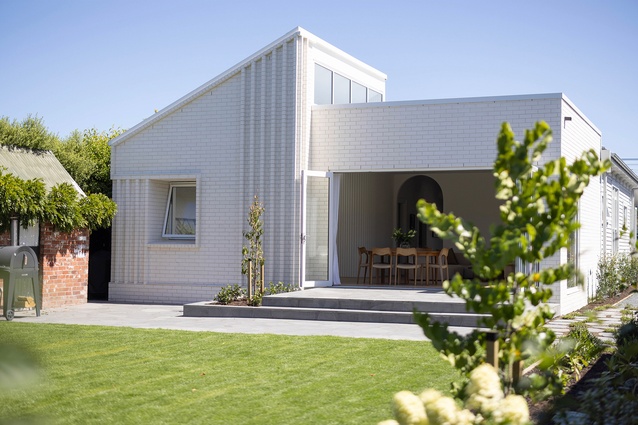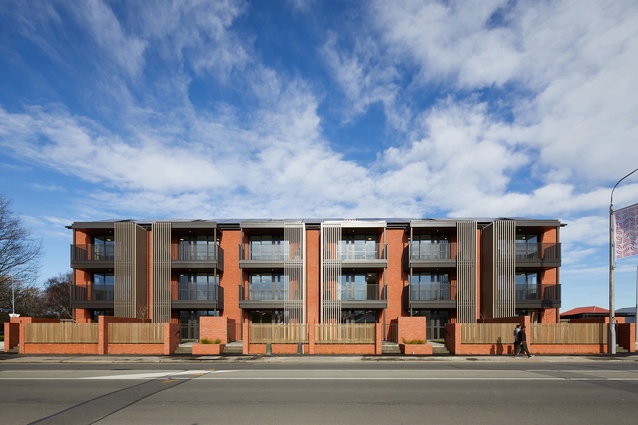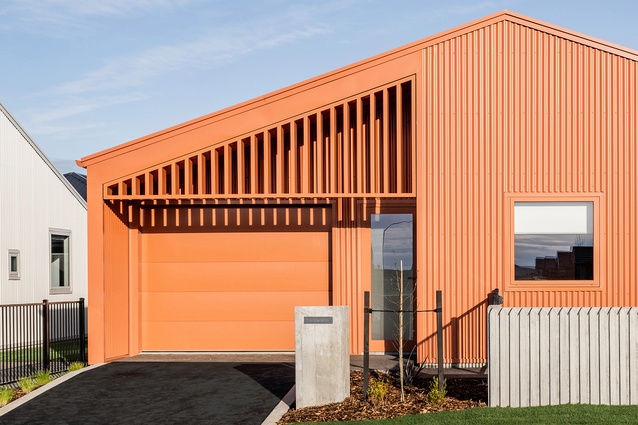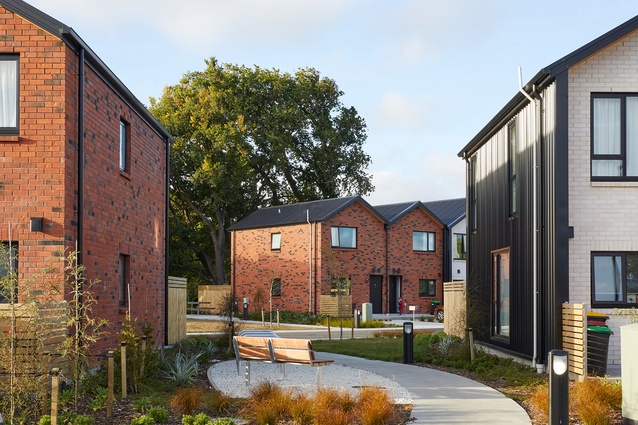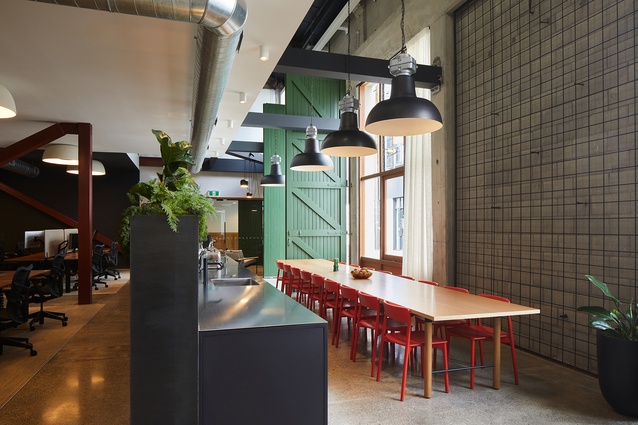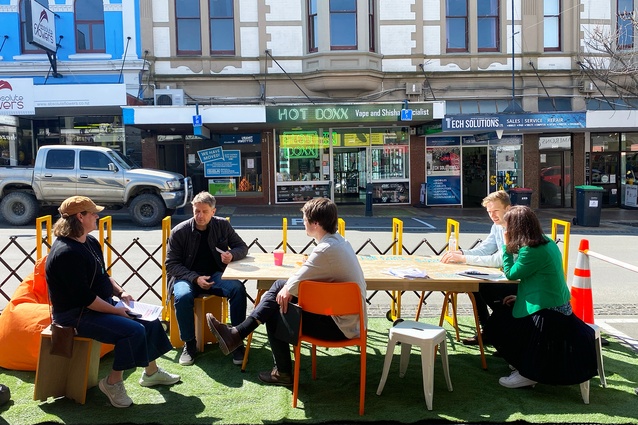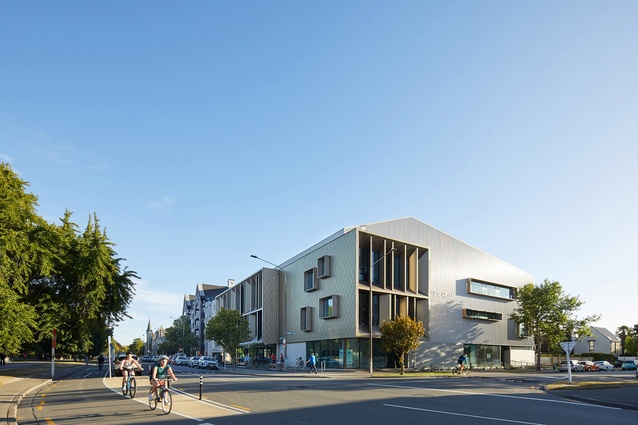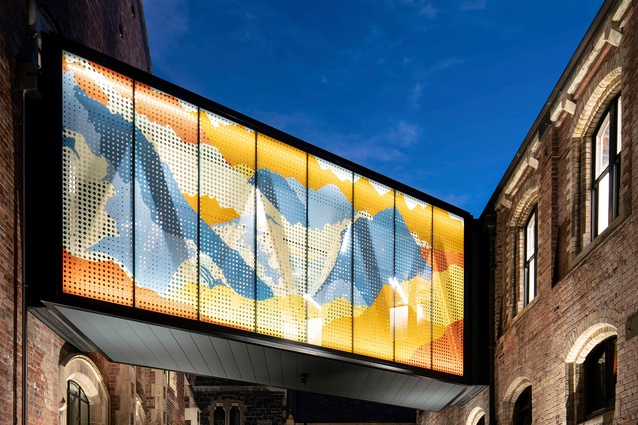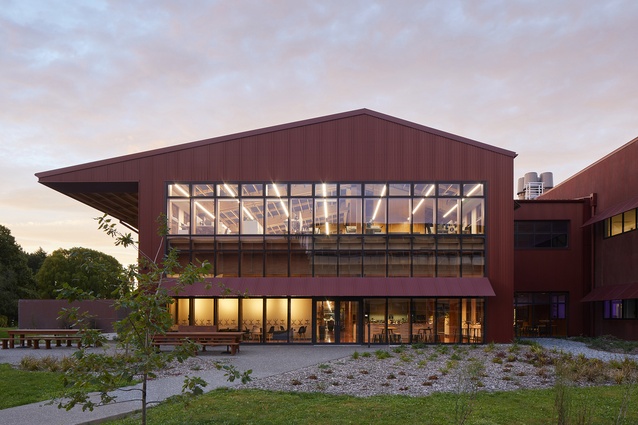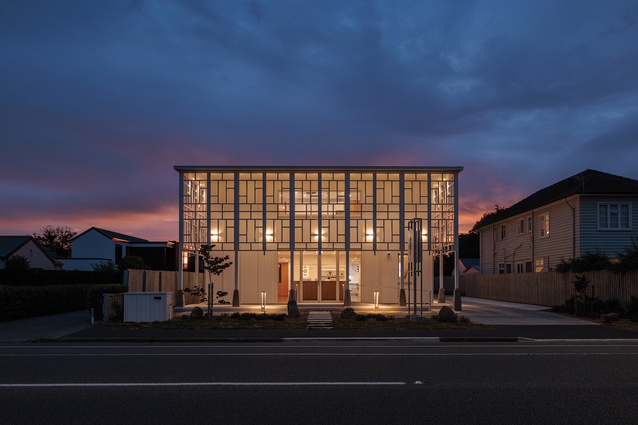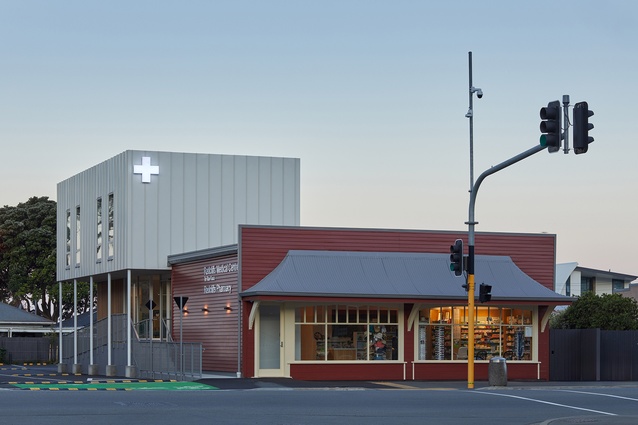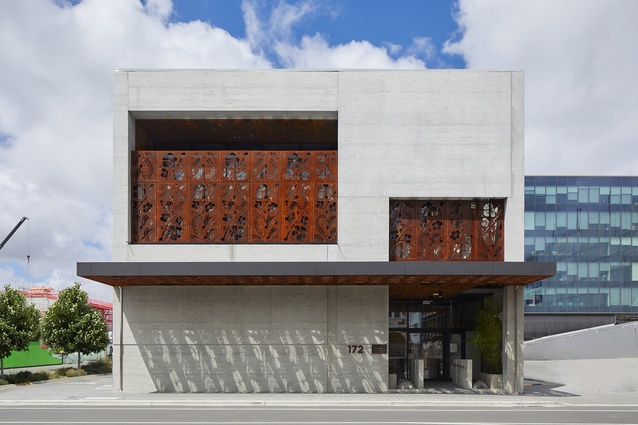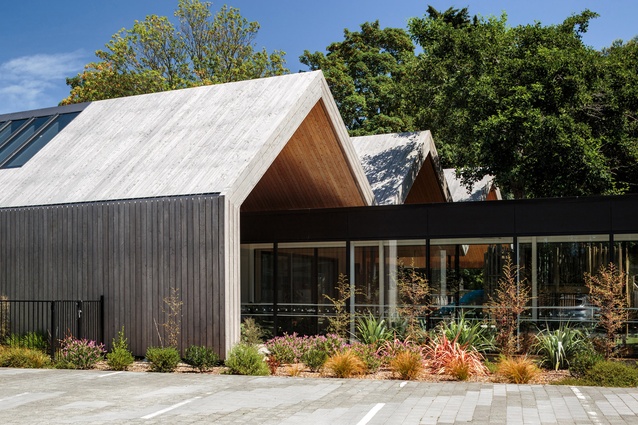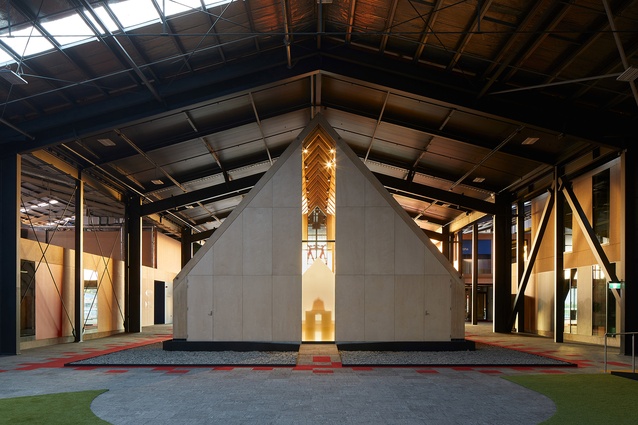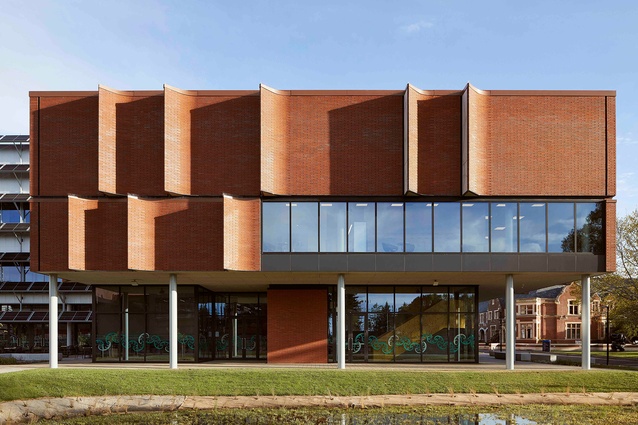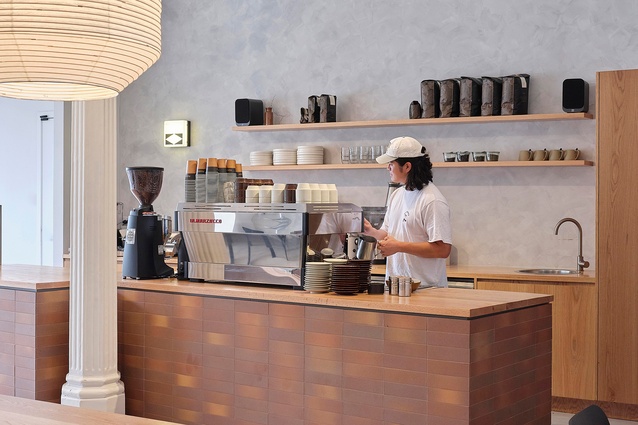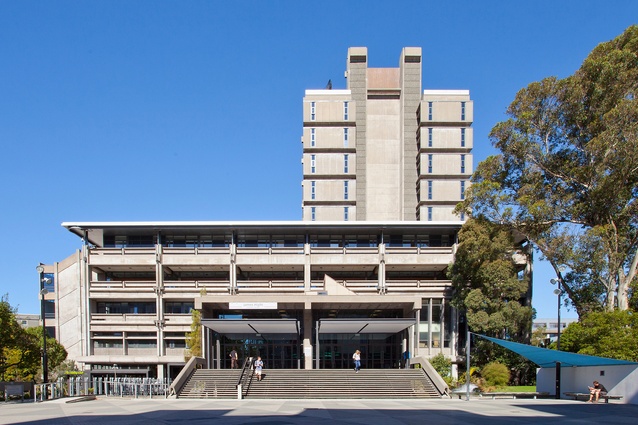Winners revealed: Canterbury Architecture Awards 2024
Twenty five projects were named the best in the Canterbury region in Te Kāhui Whaihanga New Zealand Institute of Architects Awards.
Among the winners is an entire civil regeneration project, remarkable new houses and renovations, and an iconic Brutalist library.
In the Planning & Urban Design category, the renewal plan for Timaru town centre by Isthmus Group and Gap Filler will be awarded. With many heritage buildings remaining vacant or threatened by earthquake strengthening issues in Timaru, the architects’ tactical approach to community-led placemaking will create a healthy and resilient future for the heart of the town. The plan was created in collaboration with tangata whenua, businesses and community stakeholders, and demonstrates the transformative power of architecture projects.
“We heard first-hand of the profound impact that these winning projects brought to clients’ lives and their businesses, which showcases the immense value that architects can bring,” says jury convenor Maria Chen of Athfield Architects. “Architects demonstrated their ability to think beyond conventional boundaries, from navigating tight budgets, to accommodating intricate and demanding programming, to crafting a space.”
In the housing categories, residential projects showed originality and innovation. They include Seven Colourful Little Houses by Common, an enclave of delightfully bright homes inspired by DOC huts and rural sheds (and built for $2,800/m², well below national average building costs). Ōtautahi Community Housing Trust, a social housing project that achieved Homestar 7 certification, is one of three winners in the Housing - Multi Unit category. It includes 35 environmentally, socially and economically sustainable apartments and family homes made of low-maintenance materials, designed with the collaborative integration of traditional Māori values, and finished with edible gardens. At the other end of the scale, Textured Bach, winner of HOME magazine’s 2024 City Home of the Year award, is awarded in the Housing category, as is Sumner House by RTA Studio — a dramatic and angular residential form on a tricky triangular site.
The awards jury described the Enduring Architecture recipient, University of Canterbury – Puaka-James Hight (Central Library) Building, as “a cornerstone of the Ilam university campus”. The wonderfully Brutalist architecture, constructed from 1969 to 1974, exemplifies “how enduring purpose and solid foundations transcend fleeting trends”, they said.
Three projects won Resene Colour Awards: Seven Colourful Little Houses, The Arts Centre Bridge and Tuhiraki — AgResearch Lincoln Facility.
“This year’s entries exemplify a remarkable blend of diversity, quality and bold design; a colourful tapestry of creativity and innovation within the industry,” says Chen. “They reflect the architects’ commitment to crafting enduring buildings, enriching our communities and serving as catalysts for positive change.”
Chen was joined by four other judges: Nicholas Stevens of Stevens Lawson Architects, Vanessa Carswell of Jasmax, architecture graduate Sarah Burns and lay juror and landscape architect, Adrian Taylor.
The winning projects are:
Housing
One One Two by Common

An elegant, sculptural and self-assured corner building has been carefully detailed with subtle material selection to create delicate forms and textures. At a busy urban intersection opposite the restful Avon River and Hagley Park, the building form responds to duality in its context by creating layered duality in form. A curvilinear brick mass hovers lightly above a finely detailed timber ground floor. An interplay of light is created across interior and exterior spaces through water reflection and carefully detailed steel, brick and timber screening. A tactile response for the new homeowners and a contemporary, characterful addition to the street corner.
Garden House by Johnstone Callaghan Architects

This project exudes immaculate simplicity, with every component meticulously considered and refined, despite the tight budget. The building form has been carefully integrated around the existing garden, resulting in well-proportioned outdoor spaces of purpose and individual character. The building’s dark exterior recedes into the garden landscape, creating a stunning backdrop that accentuates the vibrant natural greenery. Internally, connection to the garden remains uninterrupted with thoughtfully positioned fenestration framing views to pockets of greenery. This experience is particularly delightful when encountered during the intentionally crafted moments of pause.
Textured Bach by Nic Owen Architects
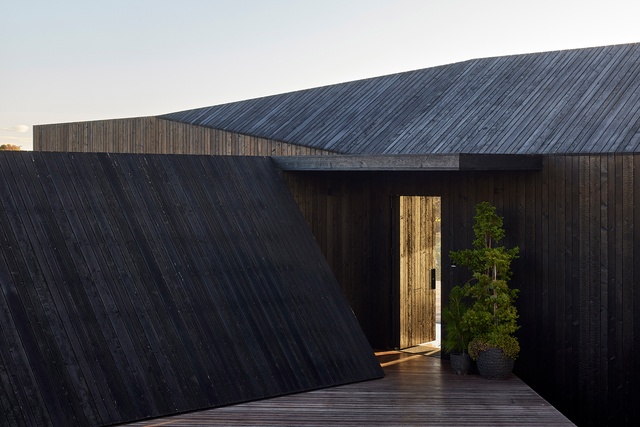
On arrival, the angular, enigmatic forms of the house emerge from a minimalist landscape, the only visible material being charred wood, which entices curiosity. Conceived as a high-performance sculpture in which to live and work, the meticulously crafted layout is experienced like an adventure. Inventive multipurpose elements feature everywhere, expressing each family member’s personality, including the cat. The abstracted sculptural form blurs the boundaries between inside and out, providing an uplifting sense of delight, while also feeling homely with a variety of snug spots and spaces to display artwork. Designed and mostly built by the owners, this unique architectural expression demonstrates how life, work, rest and play can combine in synergy across scale, detail, form and function.
Huis Kikstra by PRau
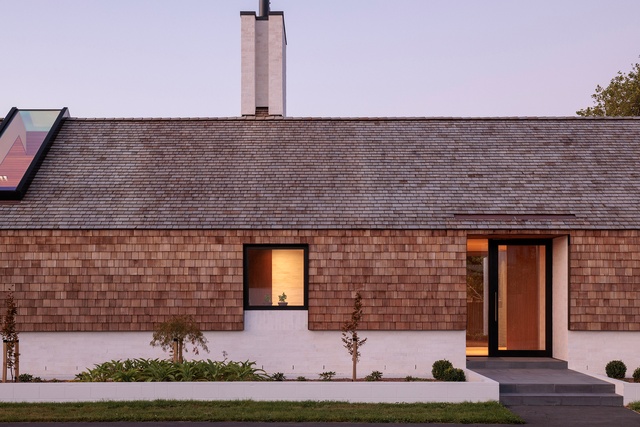
A refined contemporary reinterpretation of the Christchurch modern style. This residence embodies elegant simplicity and highlights the architect’s mastery of detail, with interest created through a balance of materiality, texture, light and shadow. The immaculate detailing highlights artful techniques, including those employed to conceal gutters and vents within the external cladding cavity. A palette of materials in natural tones, ranging from washed brick to timber shingles, resonates deeply with the clients’ heritage, contributing to the overall charm of the design and establishing a satisfying addition to the suburban streetscape.
Sumner House by RTA Studio
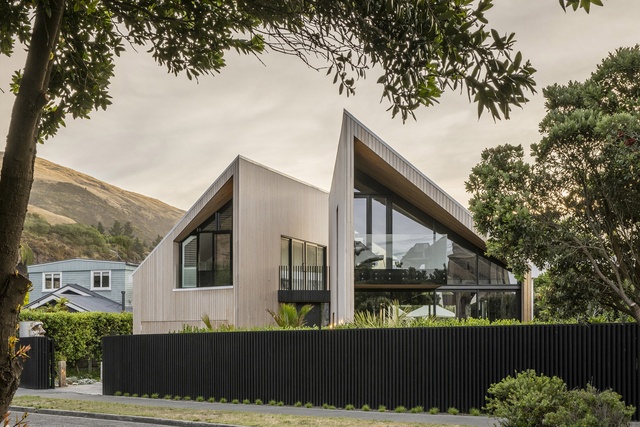
Cleverly responding to an awkward triangular site, two angular forms sit as striking, sculpted pavilions, splitting the traditional gable roof and segregating living and sleeping. The local beach context is embraced by aligning key outward views, using a sand-dune themed garden and timber cladding that will silver off in the salt spray. This lightweight solution in a coastal setting is largely constructed and finished in timber. Sustainability is further supported by passive ventilation, solar shading and a PV energy system, combining to achieve net-zero operational energy. The bold forms and tightly designed elements evoke a sense of drama, yet this effect is softened by warm timbers, artistic furnishings and lush garden views, all of which create a homely and cozy atmosphere.
Sunrise Lane House by Sheppard & Rout Architects
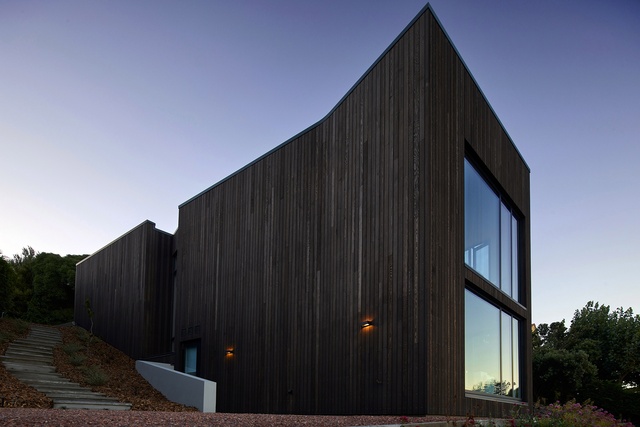
Starting as a mysterious black box, a curated journey of discovery begins on entry, teasing with outward glimpses until the final reveal in the lower-level living spaces unveils stunning views of Godley Heads. This theatrical sequence of spaces has been thoughtfully curated through curved corners, volumetric proportions and refined materiality to enhance tranquility. The building form is crafted into the steep site, projecting the lower-level living out towards the bays beyond and into the retreat of a terraced lavender-scented courtyard, with sea views maintained through floor-ceiling windows. The home empathetically understands the clients’ needs, cleverly balances retreat and reveal, and celebrates epic views while providing cozy nooks to nestle into with a good book.
Housing – Alterations and Additions
Villa 1899 by Borrmeister Architects
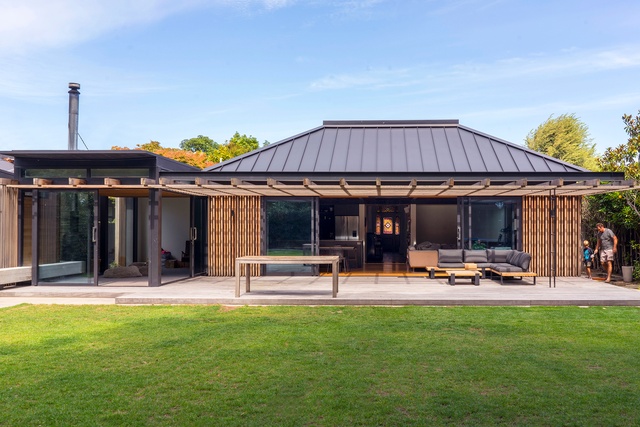
This addition to an 1899 brick heritage villa set within a leafy Christchurch suburb is achieved with skill and sensitivity. A garden room and floating pergola mediate the transition from house to garden, contrasting with the age and solidity of the villa but achieving harmony through rich materiality, texture, craft and play of light and shadow. The living spaces are intimately scaled with inventive details and carefully frame views of the garden. This elegant home provides an inspired example for contemporary additions to heritage houses.
Lucking House by Common

Paying homage to the original architect, while also being playful and practical for the new owners, this design respects each past expansion, its hand-drawn detailing, and embraces the home’s mid-century essence. The new light-filled living space cohesively connects to the kitchen and dining areas through well-proportioned internal openings and a seamless flow of materiality and detailing. The new stand-alone studio aligns planning considerations with the clients’ needs and provides a contemporary progression, daring to be slightly different. The outcome is a thoughtful alteration that has created appealing and usable new spaces, adding the next modern chapter in a cohesive and respectful way.
Repton Street by PRau
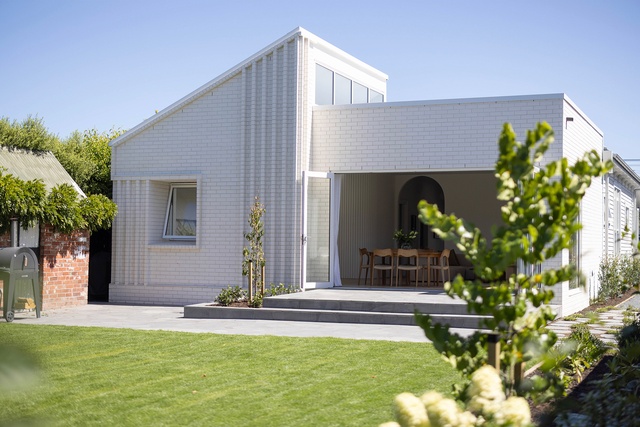
In a striking architectural transformation, this imaginative juxtaposition of old and new breathes fresh life into an existing villa and is reminiscent of the clients’ Melbourne terrace-house dwelling days. The traditional villa features are seamlessly complemented by a sweeping vertical-battened curve leading into the new addition. Here, a serene interior palette invites tranquility with ample daylight introduced through carefully placed new openings. The vertical curve language extends gracefully into the playful brick façade of the new additions.
Housing – Multi Unit
219 Riccarton Road by Architectus
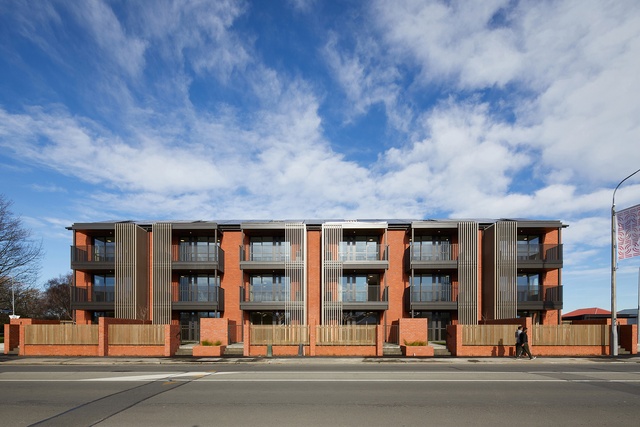
This high-quality apartment block on Riccarton Road is Kāinga Ora’s first medium-density, accessible complex in Ōtautahi Christchurch and is designed for elderly clients and those living with a disability. Strong gable forms and Canterbury-red brick walls relate well to the urban context. Balconies, metal screens and front courtyards provide privacy, shading and modulation to the street. Communal amenities, generous circulation, light-filled apartments and use of colour create a sense of collective wellbeing. Rigorously planned, well proportioned, robustly built and meticulously detailed, this pilot project is an exemplar for medium-density social housing.
Seven Colourful Little Houses by Common
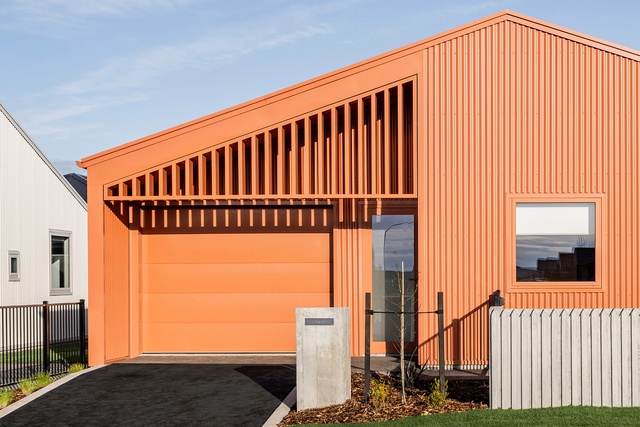
These seven little houses form an island of vibrancy and delight amid the beige sea of suburban Faringdon. Seven beautiful colours create variety and individuality and are carried through to the interiors with stylish and playful effect. These simple homes with their alternating floorplans and gable forms are also quietly inventive, right down to the cast concrete picket fences in the front yards. Inspired by the vernacular of DOC huts and rural sheds, these remarkably affordable houses show, with a little imagination, how to achieve a lot with a little — a valuable lesson for all.
Resene Colour Award
A single colour selection distinguishes each dwelling in this family of seven houses. With one determined move, an uninhibited and youthful fleet is set forth in a sea of suburbia.
Ōtautahi Community Housing Trust by South by Southeast
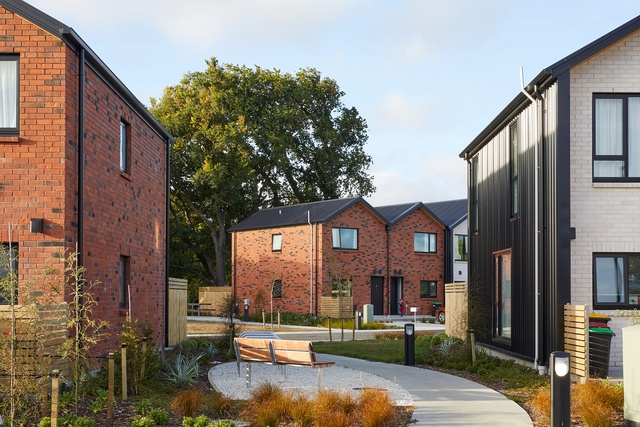
The park-side setting has been embraced by carefully organising the 35 homes in clusters to let nature meander in and create viewpoints into the borrowed landscape. Thresholds between homes are curated through a balance of solid and permeable screening, hiding the more private spaces, while maintaining community connection elsewhere. This innovative response packs in Homestar 7 certification, collaborative integration of traditional Māori values, edible gardens, high thermal efficiency and a cohesive palette of robust and low-maintenance materials. Setting the standard of economic social housing, this compassionate, human-centric design demonstrates how well-crafted architecture can elevate the lives of those in need, while also growing a community.
Interior Architecture
Simple Machines by Three Sixty Architecture
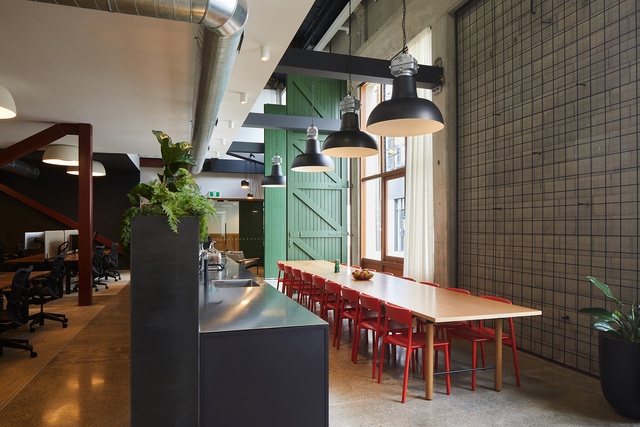
The design sensitively transforms the ground-floor tenancy of an old printing house and enhances the character and texture of its original timber and raw concrete surfaces. A ‘grown up’ residential feel has been created in this office through sheer fabrics, broadloom carpets, a mass of indoor planting and a distinct lack of commercial ceiling tiles. A social kitchen and long communal table engage with the life of the street, then transition swiftly and purposefully into intimate, quiet meeting rooms and workspaces. Quality materials and considered details are elevated by use of texture and a shot of colour.
Planning & Urban Design
Timaru CityTown Regeneration Strategy by Isthmus Group and Gap Filler in association
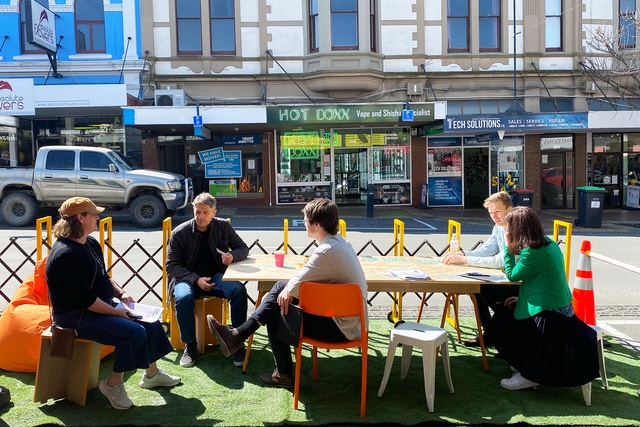
Isthmus Group’s extensive body of work not only advances the profession but also demonstrates unwavering diligence and passion. Its projects serve as catalysts for profound urban transformation. Through meticulous research and robust community engagement, they demonstrate a nuanced understanding of the intricacies of place with this project, laying the groundwork for impactful interventions. By skillfully distilling complex concepts into accessible ‘kits of parts’, their ideas are swiftly translated into action, facilitating rapid implementation of experimental urban projects. Success can be measured here by the willingness of Timaru Council and stakeholders to adopt and action the strategies provided.
Public Architecture
Papa Hou by Architectus
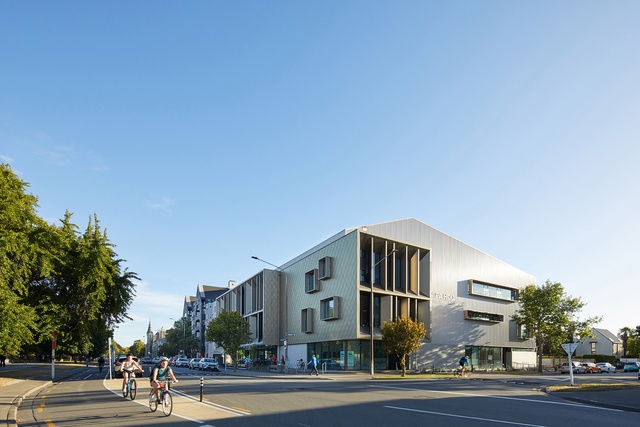
A multifunctional community facility for all ages, this building packs in a wide range of activities under an epic gabled roof, connected vertically via a light-filled open staircase. The complex brief has been cleverly resolved into a plan of simple clarity. Spaces are articulated to encourage interaction between the highly diverse range of users. From entry to destination, the journey through spaces is revealed, allowing unexpected ways to inhabit and occupy every nook. Expressive of Tāne Mahuta, the main vertical circulation reaches branch-like for the sky, integrating layers of artwork by Fayne Robinson and Flox. Health, wellbeing and energy efficiency are star performers of the sustainability strategy, which is further underscored by an understated honesty in materials and biophilic aesthetic. This is a building that takes care of its community.
Small Project Architecture
The Arts Centre Bridge by Warren and Mahoney Architects

A vibrant and whimsical addition to the traditional brick-and-stone architecture seamlessly connects two sections of the Arts Centre, offering a visually striking contemporary juxtaposition that enriches both the historic and modern elements. The reflective coloured-glass façade, inspired by Rita Angus’ renowned Cass painting, features a recurring quatrefoil pattern, paying homage to the heritage structure. The bridge is elegantly supported by a timber truss, serving both as a structural element and an elegant seismic solution.
Resene Colour Award
Enthusiastically bursting to life across a hidden courtyard, these hues-in-homage to Rita Angus give reason to engage in a beautiful heritage space, ensuring it remains a cherished part of our cultural legacy.
Commercial Architecture
Tuhiraki - AgResearch Lincoln Facility by Architectus and Lab-works Architecture
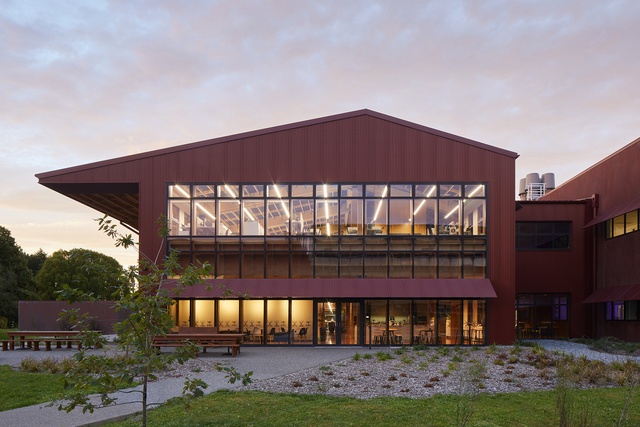
This meticulously considered, self-assured building serves as a showcase for AgResearch’s cutting-edge scientific capabilities and a catalyst for innovation across the region. Robust and well-proportioned buildings encompass a central courtyard that’s perfectly attuned to its purpose and surroundings. Clearly referencing the rural-agricultural vernacular, the design incorporates astute material and colour choices and provides an homage to context. A rigorous and highly integrated approach has been achieved in accommodating the complex programme of laboratory and workspace requirements. By reducing carbon emissions, using timber technology, sun shading, natural ventilation and stormwater attenuation and treatment systems, the project has commendable sustainability credentials. The building embraces and expresses a strong cultural narrative and creates a functional, uplifting environment for its occupants.
Resene Colour Award
A colour scheme perfectly matched to Agresearch. A highly restrained, simple colour backdrop allows the personality of natural textures to be examined. The bright life of the laboratory is accentuated against gentle earthy reds and calm green meeting spaces.
Studio Dental by Fabric
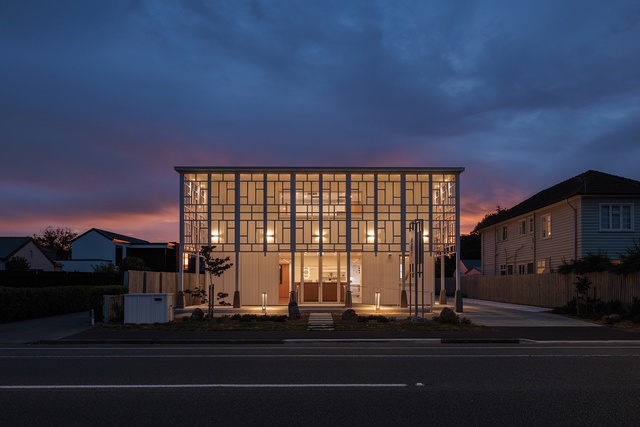
This pearly white dental centre is an elegant addition to its suburban Ōtautahi neighbourhood. The building’s simple form is articulated with a lattice screen, inspired by traditional architectural elements of the owner’s Korean heritage. The screen also serves to control temperature and light and create a sense of depth and shadow play. While seamlessly housing state-of-the-art equipment and clinical facilities, the welcoming interior is calming and relaxing, almost spa-like, which encourages staff and patient wellbeing and retention. This subtle landmark building is thoughtfully conceived and crafted, with some elements hand-finished by the architect.
Redcliffs Medical Centre by Johnstone Callaghan Architects
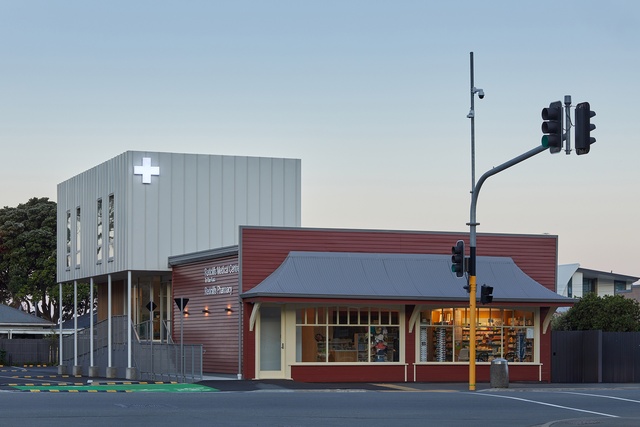
A fine-grained urban collage, this project is an uplifting addition to Redcliffs and the community it serves. The architects’ respect for local history and traditions, along with their dedication to safeguarding the street’s distinctive features, is commendable. The existing shop has been given a new lease of life, with careful façade adjustments to balance composition to the street frontage, while retaining original character. The colour palette and materiality pay homage to the surrounding built environment, extending the family of terracotta buildings it sits among.
A welcoming entrance seamlessly links the existing shop to the new additions, comprising a collection of box forms, each distinguished by its unique materials and programme, adding individual identities to the ensemble.
Consular Office of Japan in Christchurch by Sheppard & Rout Architects
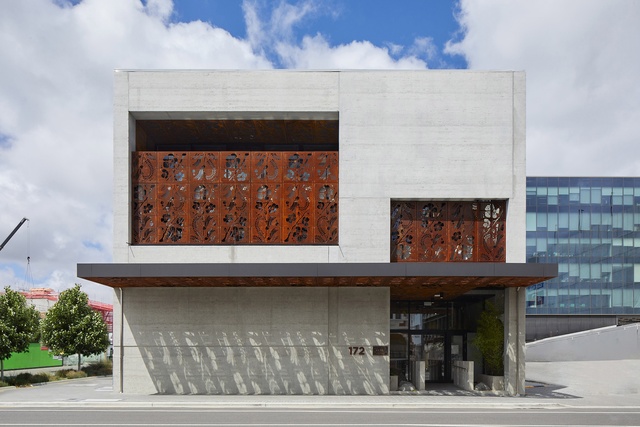
This striking urban composition evokes mystery and stokes the imagination. A pure concrete cube, proportioned into component parts, is embellished with apertures and patterned metal screens. Against a strict brief for security, secrecy and separation, the architects have incorporated a generous verandah and carefully deployed texture and shadow to offer restful solidity to the city’s glass-fronted urban landscape. On closer inspection, a cultural interplay befitting its purpose is revealed: the patterning of lace-like Corten steel by artist Morgan Mathews-Hale depicts kōwhai and cherry blossoms. The design response delves into the contrasts between two cultures — solid and void, strength and delicacy.
Education
The Wilderness Early Learning Centre by IKON Architects

A vacant 1960s boarding school has been skillfully converted into a lively, warm and modern daycare facility. The new addition flanks the perimeter of the existing building, disguising it with new macrocarpa rainscreen cladding, nesting the building into its rural bush landscape. A carefully positioned new wing creates a well-proportioned central courtyard, preserving an existing mature tree as its focal point. The client’s aspiration to achieve a strong connection to nature has been realised, with the free flow of indoor-outdoor circulation, glazing and indoor planting. Wide eaves generously project into the outdoor courtyard spaces, providing the children with shelter and respite from the elements for unrestricted play.
Marian College by Sheppard & Rout Architects

The new college is a bold, inventive and groundbreaking architectural project for a Catholic girls’ school destroyed by the Christchurch earthquakes. A typology unlike anything seen before, a sprawling warehouse form converts the new school into an urban village sheltered from the elements beneath a vast canopy roof. The skylit circulation and gathering spaces between the structures are spatially dramatic, providing the sensation of being outdoors while offering shelter from harsh climate conditions. Playing fields, a gymnasium and theatre are easily housed under the folded roof. The exquisite, atmospheric chapel near the entrance creates a slightly surreal and uplifting experience. The school’s commitment to sustainability and focus on the environment is matched by the architecture. From the imaginative repurposing of an existing building to the prefabricated timber structures within, this building is pushing the boundaries. Most importantly, students and staff are invigorated and energised by this innovative learning environment.
Waimarie – Lincoln University Science Facility by Warren and Mahoney Architects and Lab-works Architecture in association
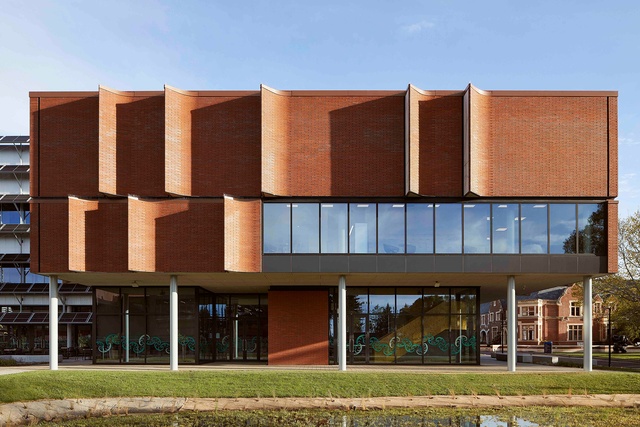
Waimarie stands out as an exemplar of tertiary architecture. It embodies a bold expression of the programme through two distinctive architectural languages — a great elegant shed towards the rear and a sculpted brick-clad teaching faculty to the forefront, subtly nodding to the adjacent historic red-brick Ivey Hall. The complex brief is distilled into a simple layout with intuitive and generous circulation routes. The innovative multifunctional lobby and teaching spaces are carefully curated with vibrant colours and textures, fostering a lively and informal environment for students. Notably, the architects have demonstrated a remarkable commitment to seamlessly integrating cultural narratives and stories from Te Taumutu Rūnanga. Sustainability strategies take centre stage, including the multifunctional solar shading solution proposed as an elegant addition to the building’s design. Innovative seismic dampening design features include a shear-wall system by Tectonus, the first time it has been used in Aotearoa New Zealand.
Enduring
University of Canterbury – Puaka-James Hight (Central Library) Building (1969-1974) by Ministry of Works
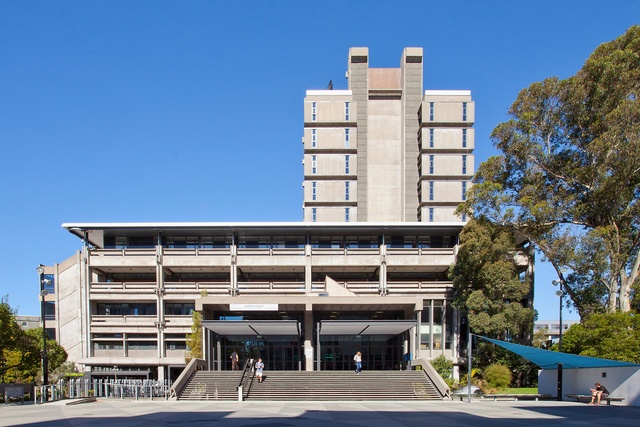
Since its completion in 1974, this bold Utopian vision has remained resilient, a testament to endurance. The Brutalist library building, a cornerstone of the Ilam university campus, has served as the focal point for research, learning and, more recently, hospitality within its undercroft. The grandeur and elegance of the main library hall have set a standard for generations of students and educators, its robust construction withstanding the rigours of constant use. Architectural character, characterised by deeply set concrete frames, is animated by an asymmetric arrangement of forms and intricate façade patterns in harmony with the landscape of mature trees and tranquil pools. While perhaps not universally cherished, this building exemplifies how enduring purpose and solid foundations transcend fleeting trends.
Hospitality
Akin by Johnstone Callaghan Architects
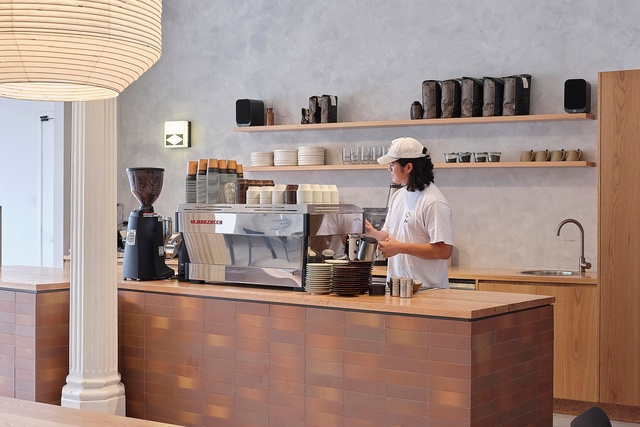
An exercise in offering more with less, both in terms of space and budget, the simplicity of this response belies its thoughtful design. Every inch of space serves a purpose, functional blocks of natural materials form furniture and joinery that invite the patina of everyday use. Pared-back details and warm lighting allow vibrancy to be created by the activities of enjoying food, drinks and conversation. A popular cafe where patrons are happily and tightly packed in to create the vibrant atmosphere many operators can only dream of.
The NZIA Architecture Awards programme is supported by Resene and APL.

